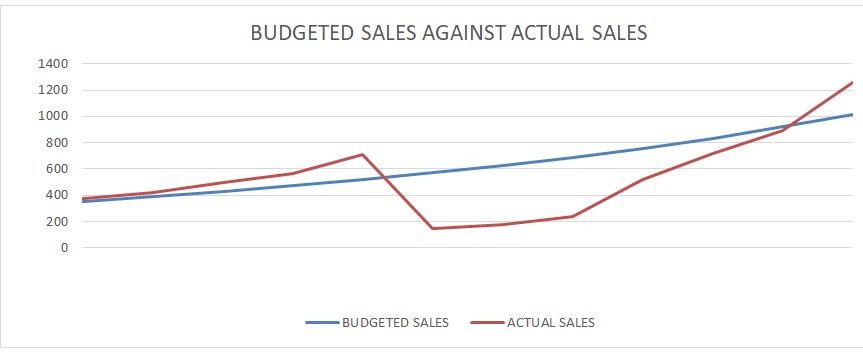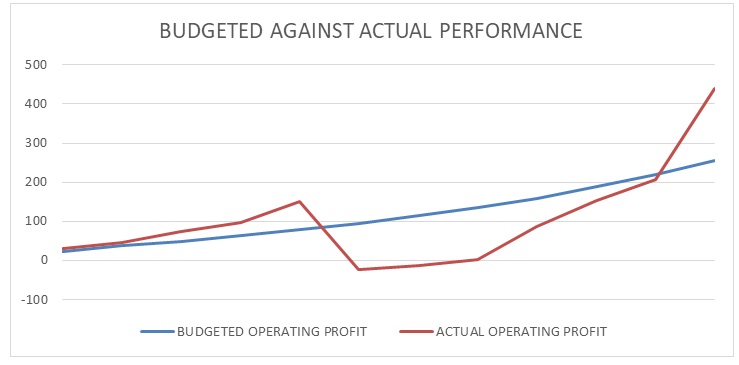Introduction
Management accounting involves measuring and reporting of economic activities of an enterprise. It is vital for the decision-making and planning of any organization and society. Managers primarily depend on the information provided by this paradigm for forecasting, operational control, and performance evaluation. For instance, managers use this information to decide what to produce, make, and when to produce. Therefore, it is helpful to them in determining various costs involved in the production process and the needed resources to attain the company’s objectives.
Additionally, the management accounting system is financial in nature. Therefore, it feeds into the financial accounting system, especially in the product costing system, which is vital in calculating the cost of sales used in the income statement and inventory cost used in the balance sheets. Arguably, this information can be seen as the backbone to the excellent management and operation of large organizations. Thus its preparation should be made monthly or quarterly and given to the various managers, including the chief financial officers, for efficient operation of their duties. This paper, hence, seeks to create a comprehensive report and analysis of the actual financial performance vis-a-vis the budgeted performance to be presented to the chief financial officer.
Summary
The actual net profit of 1036.8 shows that the company is in good operation and can secure financing and investments. However, the budgeted net profit is 153.9 higher due to the lower sales volume in the actual performance. This then signals the sales and marketing department to adjust their marketing strategy to prevent the sales lag that is deterring the company from reaching its plans. Conversely, comparing the actual and budgeted net profit margins, the 15.88 % profit margin indicates that the company earns 15.88 cents for every dollar it collects instead of £15.71 that was budgeted (Maheshwari, Maheshwari, and Maheshwari, 2021). This shows that the company is operating optimally and is highly capable of meeting its objectives. This analysis, therefore, deems it fit for the company to try and reduce the cost of sales for it to generate higher profit margins. Consequently, the company is required to minimize the selling costs and increase its sales volume to continue earning higher returns. Similarly, in the analysis of this data, the liquidity ratio is also vital to examine as it determines whether the company can pay off current debt obligations.
The liquidity ratio shows the company is relatively in a good position to clear its current debts without using the inventory financing method, which is the least liquid. Its quick ratio of 0.8 indicates that it has £0.81 of liquid assets without inventory to cover £1 liability (Maheshwari, Maheshwari, and Maheshwari, 2021). Although the company desires to achieve 1.02, it is not close to insolvency. With all these analyses, it is prudent to argue that the company is in good operation for the foreseeable future.
Statements of Profit & Loss
Budgeted statement of profit and loss account for the year ended 30th Sept 2020.
Actual statement of profit and loss account for the year ended 30th Sept 2020.
Pie Chart Showing Both Performance of the Company


In the data above, direct labor costs take a more considerable percentage of all the costs involved in the performance of this company. Direct labor costs apply to the cost of labor that can be traced to the creation of a product without unnecessary expenses, for example, the salaries and wages paid to the workers. It takes a more considerable percentage because it determines the volume of production (Maheshwari, Maheshwari, and Maheshwari, 2021). As production increases, labor cost also increases; that is why in the budgeted performance, the cost of direct labor is 2% higher than the actual cost of direct labor. It is followed by direct material cost, which includes the cost of raw materials and the items used to create the products. The direct materials in the bakery industry, for example, would consist of flour, eggs, oil, and water. It also contributes a bigger percentage of costs in the production process.
When the production is increased, the output will be increased, and thus the inputs costs, including direct materials, must increase. This is evident in the two charts as it indicates that the direct materials costs are higher in the budgeted performance with higher sales. It is followed by the variable cost in the chart, variable costs are the business expenses that changes according to the output or sales. Therefore it varies linearly with the output level. On most occasions, it decreases with the increase in production or sales, as depicted from the charts (Maheshwari, Maheshwari, and Maheshwari, 2021). The budgeted plan with higher sales has a lower percentage of the variable cost than the actual plan with lower sales. It is closely followed by the fixed cost, which includes those costs that do not change when production or sales volume changes; they do not vary with the output volume. Always the total fixed cost does not change, and they remain within a given range.
However, the cost per unit of fixed cost decreases with the increase in production because the exact fixed costs are spread over more units. This is evident in the charts above, as they shows that in the budgeted program, the fixed cost is 6.76%, and the actual program is 7.87%. Following is the distribution cost, which is associated with storing and delivering the products to the respective customers. These costs are incurred in getting the finished products to customers, for example, the cost of fuel and depreciation of the vehicle. They are directly related to the output level, as the output level increases, the distribution cost increases, as seen in the charts. The selling costs also form part of the business performance. It deals with the costs associated with getting orders or requests from customers. They include salaries and commissions paid to the sales and advertising agents. As the output increases, the need for many selling agents is necessary; therefore, it also increases but not proportionately to the output level.
Ensuing is the administration cost, which involves paying salaries and wages and giving benefits to the non-sales individuals. It is also directly related to the output volume. The Finance costs, which include the cost incurred by the management to secure funds for the organization’s activities, are also included in the costs. Finally, there is the cost of taxation which involves the charge by the government authority on the gross profit or loss of the company, including interest on debentures and dividends to shareholders. It is proportionately related to the output level as shown on the charts. As output increases, the tax also increases, thus its costs increases (Maheshwari, Maheshwari, and Maheshwari, 2021). From the above-analyzed data, we can say that both the business’s actual and planned performance is in the same line, and there is a slight diversion on the actual and intended outcome; hence, they are positively related in terms of profit goals of the company.
Graphs Comparing the Budgeted Against the Actual Performance
Budgeted Against Actual Sales.



The graphs above measure the actual performance and the budgeted performance of the business. They show the variance between the business plan and the actual outcome. From the graphs, we can see that the budgeted; sales, operating profit, gross profit, and the actual; sales, gross profit, operating profit exhibit the same trend. The budgeted parameters designates a constant increasing growth, while all the actual parameters show a fluctuating growth. The actual parameters have a steadily increasing growth from October to February. They reach their peak in January and starts dropping in February up to March and then start to pick again with a constant speed before they start increasing increasingly in May. The performance then starts to shoot at a higher rate from august to its pick in September. As a result, this implies that the business has peak and low seasons across these performance periods, and the company should therefore strive to minimize losses during the low seasons and maximize its profits in high seasons.
Profitability Ratio Calculations for both Budgeted and Actual Years
Net profit ratio: the calculation of these ratios are derived from the statements of profit or loss accounts created above.
Actual performance
- Net profit ratio = (net profit / net sales)*100 = 1036.8/6527 * 100 = 15.88
- Operating profit margin = (operating profit / sales) * 100 = 1248/6527 * 100 = 19.12
Budgeted performance
- Net profit ratio = (net profit / net sales)*100 = 1190.7/7577 * 100 = 15.71
- Operating profit margin = (operating profit / sales) * 100 = 1419/7577 * 100 = 18.73
Liquidity Ratio Calculations for Both Budgeted and Actual Years
Quick ratio: from the statement of financial position above, the quick ratio for both the actual and budgeted performance can be obtained as follows;
Actual performance
- Quick ratio = (currentassets – inventory – prepaid expeses)/ currentliabilities = (12461.3 – 4150 – 1800)/ 8324 = 0.8
- Current ratio = currentassets/ currentliabilities = 12461.3/ 8324 = 1.49
Budgeted performance
- Quick ratio = (currentassets – inventory – prepaid expeses)/ currentliabilities = (12615.2 – 3150 – 1000)/ 8324 = 1.02
- Current ratio = currentassets/ currentliabilities = 12615.2/ 8324 = 1.52
Conclusion
In conclusion, management accounting can be seen as the engine that drives every organization to success. Its financial nature also makes it possible for the managers to predict and plan for the company’s future operations. Every organization should strive to use management accounting extensively. And the managers and the users of the accounting information should practice the economic theories that form the basis of cost accounting to aid in influencing effective decision-making in large and small organizations. On the other hand, management accounting system has been seen as an evaluation tool that evaluates the profitability of individual products and product lines. Therefore, this approach should be applied in determining the relative performance and achievement of different managers under different categories, programs, and departments in the organization.
The organization would increase its accountability throughout the departments and minimize unnecessary expenses or losses. Through the management accounting, the managers would know the work in progress on the production floor and their stages of completion. This helps the line manager in spotting the bottlenecks and maintain smooth running of the production process. Therefore, it would be feasible for companies or organizations that have not incorporated this system to incorporate it and for those that have already integrated it to employ the synergistic energy in advancing it for better performance.
Reference List
Maheshwari, S.N., Maheshwari, S.K. and Maheshwari, M.S.K. (2021). Principles of management accounting. New Delhi. Sultan Chand & Sons.